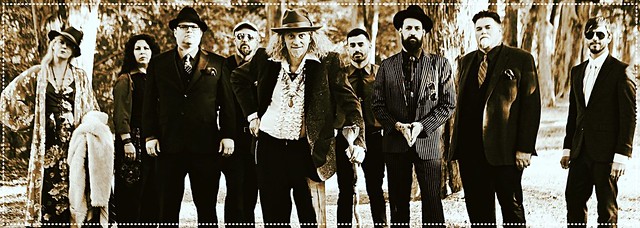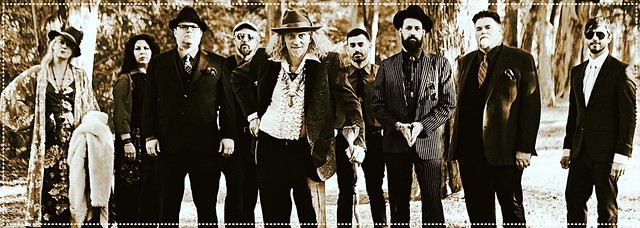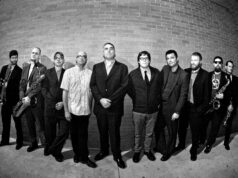
Squirrel Nut Zippers (Photo courtesy the artist)
Since 1995, the Squirrel Nut Zippers have sacked and plundered the old, weird America then sailed off to further distant lands. They have used New Orleans as their hideout and base of operations. Jean-Lafitte-like the hide in the lee side of barrier island, receiving goods and masking dark back channel deals; hiding in cellars or in plain view.
On Sept. 25, fans will be able to gaze into the tea leaves that make up their brand new album: Lost Songs of Doc Souchon to see if they can discern their own destiny. The first single from the album “Animule Ball” was originally recorded back in 1938 by Jelly Roll Morton.
Lost Songs Of Doc Souchon follows the band’s last studio album, Beasts Of Burgundy, which debuted at No. 4 on the Billboard Jazz Album Chart.
“This new album was inspired by all of the mysterious characters from the history of New Orleans jazz music,” commented band leader Jimbo Mathus. “It speaks to the hidden roots of where our aesthetic, interests and philosophy comes from. It pulls on the hidden thread.”
Lost Songs Of Doc Souchon contains ten new tracks, a combination of newly written Zippers material, along with a few songs from past times.
As mentioned above, the album’s first single is a cover that dates back to 1938. In keeping with that time period, the band turned to Fleischer Studios (home of Betty Boop) to use some of their historic animations for a brand new video for the track.
Watch the official music video for “Animule Ball” by Squirrel Nut Zippers on YouTube:
“When I first started the Zippers, the Max and Dave Fleischer cartoons were a huge part of our inspiration. The look, the music, all of it,” Jimbo said. “So to have their blessing to use some of these characters and create something new with it is thrilling to me.”
“Fleischer Studios has a long history of bringing together the best in music and animation, so the opportunity to continue that great tradition with a band like the Squirrel Nut Zippers, nearly 100 years after debuting the first sound cartoon in 1926, is a wonderful honor; and one that would surely put a smile on Max Fleischer’s face,” commented Jeni Mahoney.
The Squirrel Nut Zippers began their musical journey in Chapel Hill, North Carolina, in the mid 1990’s, as a musician’s escape from the cookie cutter world of modern rock radio at the time. Jimbo Mathus along with drummer/percussionist Chris Phillips formed the band as a casual musical foray among friends and family in the area. It wasn’t long before the band’s quirky mix of jazz chords, folk music, and punk rock leanings spread out of the region and attracted a national audience.
Between 1995-2000 the Squirrel Nut Zippers sold over three million albums. Their watershed album, Hot (1996) was recorded in the heat of New Orleans, fueled by a smoldering mix of booze and a youthful hunger to unlock the secrets of old world jazz. This passion mixed with klezmer, blues and random bits of contemporary musical leanings became the bands signature style. At the time, there were few other bands inhabiting this space. The album would eventually break free of any “jazz” stereotypes and land on commercial radio, taking the band to remarkable heights for what was essentially an anti-establishment sound.






